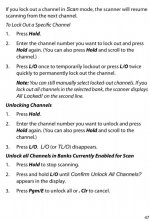To add, scanning through all the frequencies 25MHz-512MHz will take forever and a day. (While the radio is scanning a different portion of the bands, activity on the other frequency’s wont be heard. So, the larger amount of frequencies you search will cause your chances of missing something. There’s an old saying that relates to scanner radios, “more is less”. If you want to search, consider reducing the upper and lower limits of that search. The other reply’s to your request for help suggest you study the manual (the easier to read manual). But sometimes that only confuses more when one is not familiar with the terminology. Radio Reference has additional forums, one of which is their Regional forums, listed by state. It’s a good place to start if you want to be able to sit with someone who knows the terminology and how to program. A word of caution… if you do decide to meet up with someone choose a public space with WiFi (in case there is programming that needs downloading and of course the Radio Reference database. In Ham Radio, we call those who mentor newbies “Elmers”. While I have no idea how they came up with the term “Elmer”, it’s obvious they are priceless when it comes to reducing frustration levels and learning curves. I’ve met up with quite a few, my most challenging was a totally sight impaired fellow who bought the SDS100. My first thought was “What was he thinking?” But he was determined to at least get some understanding of how to manage getting it to scan without any help, either from others or computer programs designed for the vision impaired. And he did accomplish operating the scanner with limited success.


